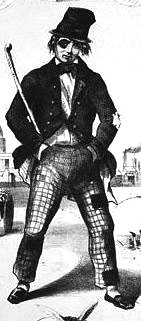Scott's Opera House

Venue Type & Location
Site Name: Scott's Opera House
Location: Galt
County: Waterloo
Location Type: Town - in town at determined location
Overview
Address: 10 Grand Avenue South, Galt ON (Approximately)
It must have seemed like the end of an era, when fire raged in the building that for 40 years was the Scott Opera House in Galt.
But by 1930, around the time this photo was taken, the era of the grandiose opera houses in small-town venues was ending.
The window for the phenomenon was really only about a century.
The mid-1800s saw the creation of immense personal wealth from the booming economy of the expansionist United States and Canada, and resource-hungry Europe. Lumber moguls, cattle barons and wheat kings thrived. The nouveau riche wanted to bring the sophistication of their European homelands to their new rough-and-tumble communities in the Western Hemisphere.
It was in this period that such buildings as the Amazon Opera House at Manaus in the heart of the Amazon jungle, and the Hilliard Opera House in the wilds of Rat Portage (now Kenora, Ont.) were built.
An opera house was being planned in Galt at roughly the same time.
The driving force was John Scott.
Scott was born in 1834 in Hawick, Roxburgh, Scotland, and arrived in Galt (now Cambridge) in the mid-1800s. After holding a few jobs and working as a butcher, he became an exporter of cattle and horses.
The Flash from the Past from December 2011 quotes City of Cambridge archivist Jim Quantrell as noting in his book "Cambridge Mosaic" — a "who's who" guide to the city's past — that "In time he became one of the largest livestock exporters in Canada, operating out of the immense Seagram Stables in Waterloo."
In 1899, Scott financed the construction of the 1,000-seat Scott's Opera House on the west side of the Grand River in Galt.
Over the years, it was a venue for more than opera. Stage acts of various types, hypnotists and magicians, gymnasts and travelling theatre companies made "Scott's" a regular stop on their circuit of southern Ontario performance spaces.
The eminent theatrical weekly paper of the early 20th century, the New York Dramatic Mirror, noted for the issue of Sept. 5, 1903, that Scott's Opera House (John Evans, manager) had recently hosted the performance of "The Fisherman's Daughter" to a small house, but good performance. Upcoming were William Owen in "When Louis Eleventh Was King" (which was also playing in London and St. Catharines); "Ghosts"; and Culhanes, Chase and Weston's Minstrels.
The Waterloo Region Museum has a display of theatrical artifacts at the entrance to its own theatre, with some items from Scott's, including the 1904 playbill for "The Bohemian Girl" and an elegant lady's opera cloak.
The museum's accompanying text about Scott's notes that, "Audiences attending opera performances at Scott's were expected to 'refrain from stomping their feet, shouting, standing in chairs and spitting,' but audiences rarely did."
Among the museum's holdings is a Scott's playbill from "Friday Eve'g, March 16 1906" that promotes the "Dumfries Foundry Benefit Society's 23rd Annual Concert of the Goldie & McCulloch Co.'s Works."
Galt long-timers may remember that Goldie and McCulloch was a manufacturer of engines, turbines, water wheels and doors for safes. In 1923, Goldie and McCulloch merged with Babcock and Wilcox, which continues the tradition of making boilers and energy-producing equipment.
Cambridge author Bob Green, in his popular book "Eavesdroppings: Stories from Small Towns When Sin was Fun," writes about Scott's, saying that playbills from the early 1900s "are loaded with famous stage names that make one swoon with nostalgia. Who can forget Mortimer Ellingham, Adelaid Eaton Colton and Linnie Lorrimer Deanne? And how about Mack Sennett, Bessie Smith, Billie Burke, and Sophie Tucker? Mack Sennett played a minor role in the musical comedy 'Wang,' but later became Hollywood's king of slapstick and creator of the Keystone Kops."
Maude Adams, who at the height of her career in the early 1900s made as much as a million dollars a year, played Scott's in her most popular role as Peter Pan, "flying over the audience suspended in a harness hooked to an intricate network of wires."
Green wrote that, "Local talent performed at Scott's too. The YMCA annually staged a Grand Gymnastic Exhibition, including stunts on a real horse, a ladies' physical culture and Morris dancing demonstration ..."
Green wrote that Scott built the opera house " ... because he believed the district could do with a bit of class. Scott made the ushers and orchestra members wear tuxedos and stiff white shirts ..."
Many opera houses found that movies brought in more revenue than gymnastic exhibitions, and visible in this photo is a banner for "Footshead Crime" and "Ranson's Folly."
Ranson's Folly could be the 1926 silent film that was widely circulated just a year before the talking film "The Jazz Singer" was to consign all silent films to the trash heap of history.
The date for this photo, from the City of Cambridge Archives, is suggested as around 1930.
Both the museum's display and the 2011 Flash from the Past mention that Scott's closed in 1928 and was razed shortly some time after, but this photograph would suggest that fire damage precipitated the demolition.
Bean, Bill. "#TBT Where famous names came to perform in Galt." The Record. 26 September 2014. Accessed June 22, 2017. www.therecord.com/living-story/4876930--tbt-where-famous-names-came-to-p...
 On the Road Again
On the Road Again


